


Social systems. Formalization and computer
simulation :
Text-book. - Omsk: Omsk State Univ, 2000. - 160 p.
A.K. Guts, V.V. Korobitsin, A.A. Laptev, L.A. Pautova, J.V. Frolova
Text-book is dedicated to problems of computer simulation of social
processes and presents itself synopsises of lectures, which were read
to students of Omsk State University on grant
Course Development Competition of
the Central-European university (Budapest, Hungary).
For students of social departments.
Contents:
Introduction ( A.K. Guts)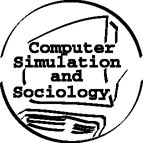
( J.V. Frolova, V.V. Korobitsin, A.K. Guts)
- 1.1. What is Simulation?
- 1.1.1. Simulation as Cognitive Method
- 1.1.2. Modeling Types
- 1.1.3. Mathematical Modeling
- 1.1.4. Simulation
- 1.2. Computer Simulation
- 1.2.1. Computer Model, its Types and Steps
- 1.2.2. Computer Simulation Methods
- 1.2.3. Model Visualization
- 1.3. Social Processes Simulation
- 1.3.1. Social Processes and Formalization
- 1.3.2. Modeling Approaches in Sociology
- 1.3.3. Practical Results
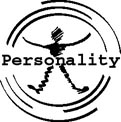
- 2.1. Individual in Real Society
- 2.1.1. Homo Sociologicus
- 2.1.2. Personality and its Social Action
- 2.1.3. Social Action Levels
- 2.2. Personality Behaviour Formalization
- 2.2.1. Multi-agent Modeling and Artificial Life
- 2.2.2. Object-oriented Programming
- 2.2.3. Object-oriented Programming Languages
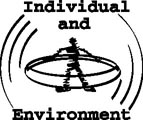
- 3.1. Individual Activities in Real Life
- 3.1.1. Individual and Ambient
- 3.1.2. General Model of Action System
- 3.2. Social Adaptation
- 3.2.1. Adaptation
- 3.2.2. Social Adaptation Processes on Individual Level
- 3.2.3. Adaptive Behaviour Types
- 3.3. Multi-agent Model of Artificial Life
- 3.3.1. Multi-agent Modeling
- 3.3.2. Artificial Life of Agent in Environment
- 3.3.3. Artificial Life Rules
- 3.3.4. Artificial Life on Sugar Hills
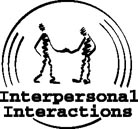
- 4.1. Social Interaction
- 4.1.1. Social Interaction Description
- 4.1.2. Social Interaction Process
- 4.2. Interpersonal Interaction Theories
- 4.2.1. Behaviourism
- 4.2.2. Exchange Theory
- 4.2.3. Interaction Interpretation Theory
- 4.3. Interpersonal Interactions Model in Artificial Life
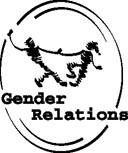
- 5.1. What is Gender?
- 5.1.1. Gender Theoretical Concepts
- 5.1.2. Gender as Social Construct
- 5.1.3. Gender System
- 5.1.4. Gender Construction Process
- 5.2. Gender Studies
- 5.2.1. Gender as Social Analysis Tool
- 5.2.2. Gender and Women Research
- 5.2.3. Gender as Cultural Metaphore
- 5.3. Gender Relations
- 5.3.1. Gender Representation
- 5.3.2. Construction Areas of Gender Relation
- 5.4. Gender Relation Model in Artificial Life
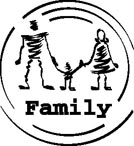
- 6.1. Social Institute
- 6.1.1. Institute System
- 6.1.2. Institutionalization
- 6.1.3. Social Institute Functions
- 6.2. Family as Social Institute
- 6.2.1. Family Institute
- 6.2.2. Family Functions
- 6.2.3. Family Structure Types
- 6.3. Gender Relation in Family
- 6.3.1. Relations an authorities
- 6.3.2. What is Main for Woman: Work or Family ?
- 6.4. Family Model in Artificial Society
- 6.4.1. Family Formalization
- 6.4.2. Computer Model of Adaptive Behaviour
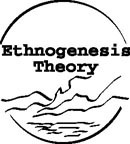
- 7.1. Ethnological Definitions
- 7.1.1. What is Ethnos?
- 7.1.2. Drive Energy History
- 7.1.3. Ethnos Structure
- 7.1.4. Ethnical Hierarchy
- 7.2. Ethnogenesis Process
- 7.2.1. Ethnogenesis Phases
- 7.3. Ethnical System Functional Process
- 7.4. Battles on Computer Ethnical Field
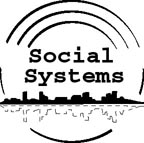
- 8.1. Society by T. Parsons
- 8.1.1. Social Systems
- 8.1.2. Societal Community
- 8.1.3. Ethnics Samples Subsystem
- 8.1.4. Political System
- 8.1.5. Economical System
- 8.1.6. Social Process Cycles
- 8.1.7. Social System Formalization
- 8.2. Computer Simulation of Society
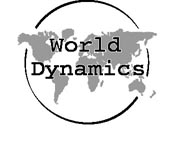
- 9.1. Rome Club
- 9.2. Model by J. Forrester
- 9.3. World System Modeling